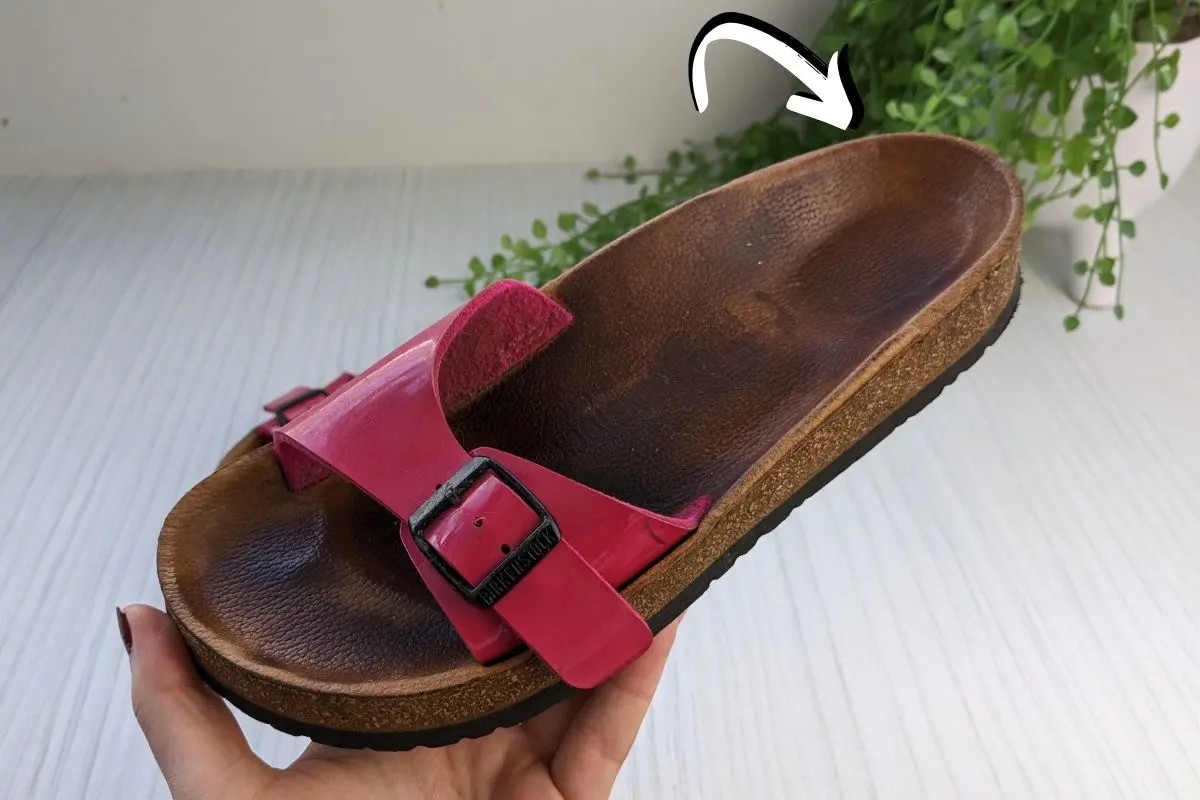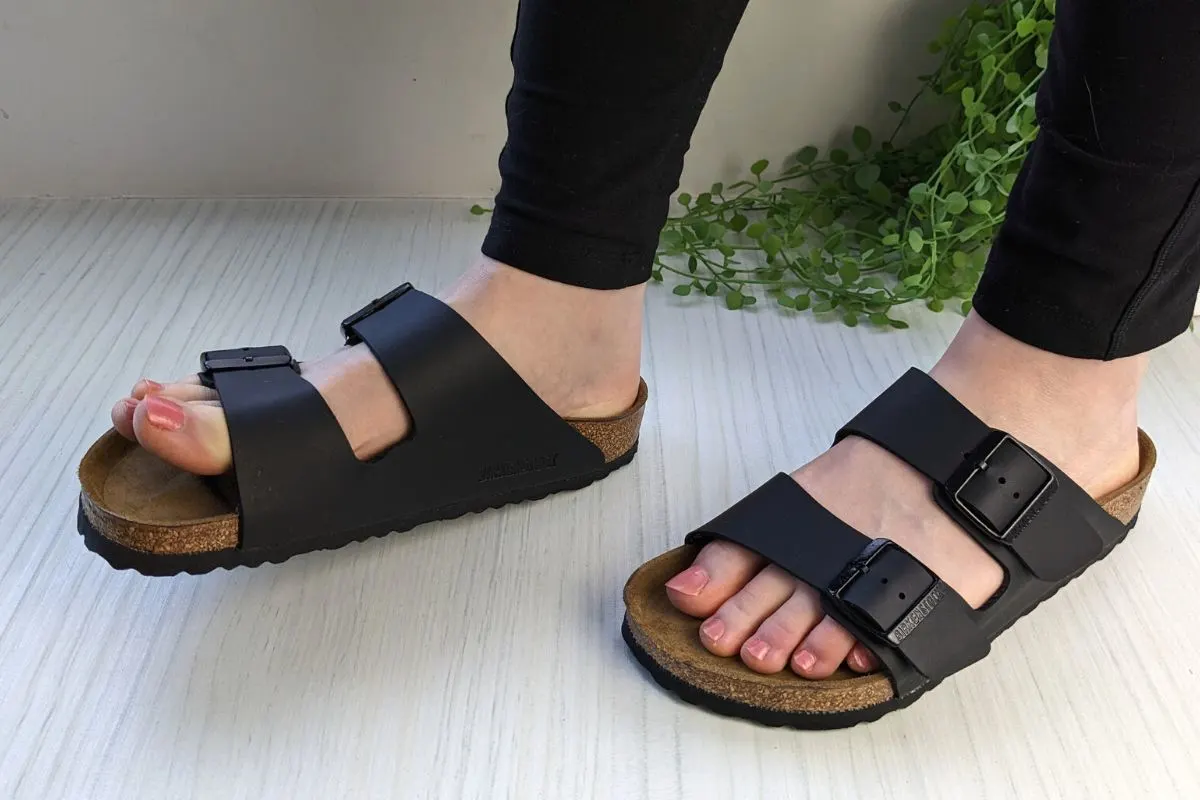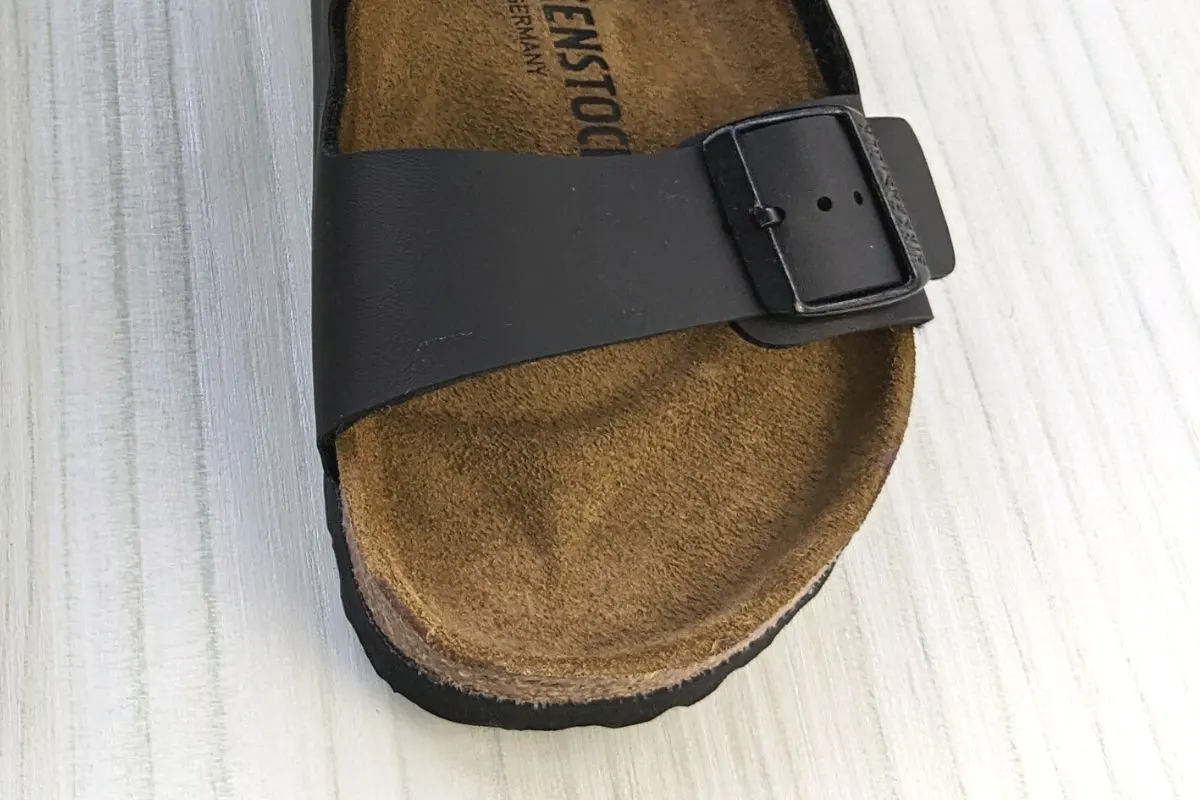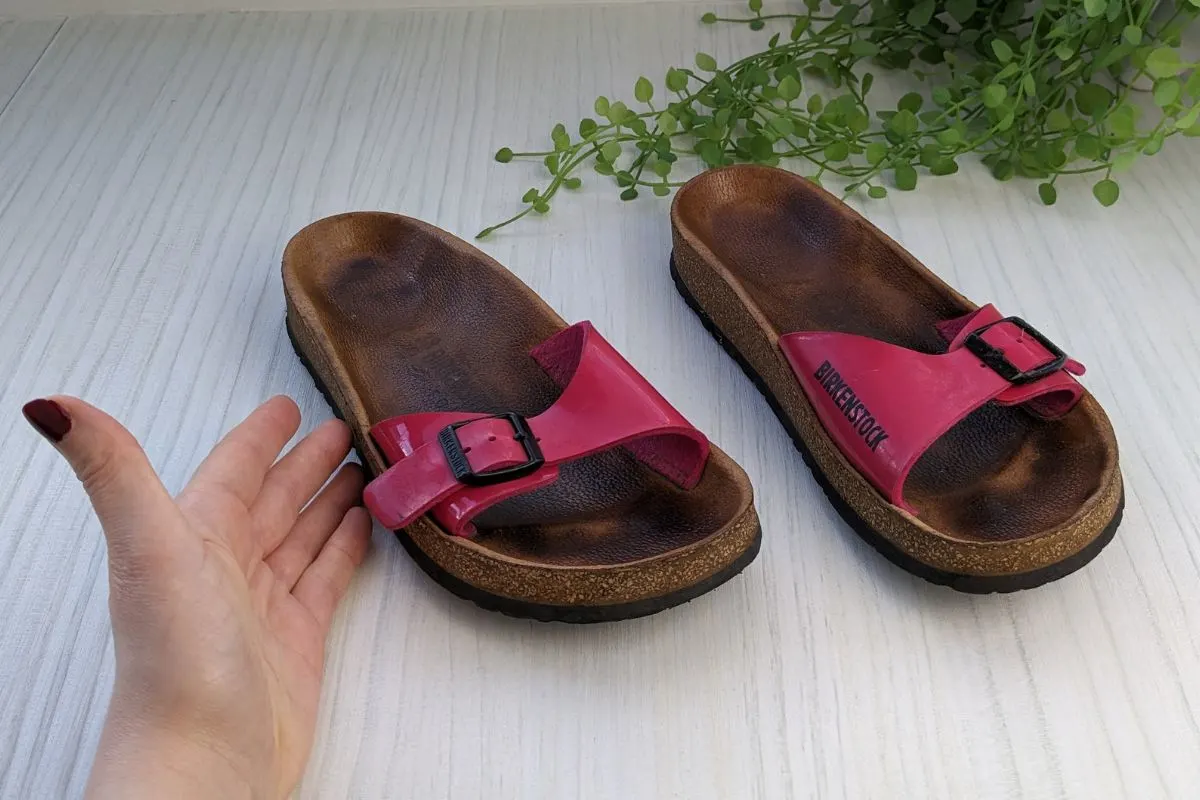Are you sick of your spouse wearing ugly Birkenstocks? Perhaps they wear them out on dinner dates and make you cringe behind your pasta. Or maybe you’re tired of seeing them on the feet of hipsters, and can’t wrap your head around why these lumps of orthopaedic cork are so adored.
Fear not! You are not alone; many agree that Birkenstocks are the worst shoes. Birkenstock lovers will beg to differ, but if you are not convinced that they are the holy grail of shoes, here’s the ammo to validate your opinion that Birkenstocks are the worst.

Birkenstocks are considered to be the worst shoes by many. They are frumpy, expensive, hard to wear, have smelly odors, bacteria, and can even become moldy if the linings get wet. Inners also turn black and get slimy with excessive wear. Birkenstocks aren’t a ‘one shoe fits all’ for different foot types and can cause discomfort if they don’t suit your foot shape.

There is nothing worse than ugly shoes. If you are a fashionista, or an ordinary person who favors stylishness Birkenstocks should not be your go-to shoe.
Or say you enjoy wearing pristine, odour-free footwear; you may want to avoid Birks, as over time they can build up a stink and become unhygienic to wear.
Simply put, for some Birkenstocks are the worst shoes, and here’s seven reasons why.
1. Birkenstocks Are Not Beautiful
Birkenstocks have been voted as one of the 50 ugliest shoes in history. Ouch.
The Cut (an online magazine) described them as ‘odd’, and belonging in a hippy commune. Obviously, it’s not likely that you’ll see Birkenstocks at stylish soirées, but to some Birkenstocks fans naming them one of the ugliest shoes in history may seem a little harsh.

Sure, podiatrists endorse them the world over, and fans wax lyrical about the benefits of Birkenstocks. Still, the truth be told, there is a point that frumpy and fantastic part ways. Birkenstocks hover at this point. They may have some podiatric benefits but for some they are not worth sacrificing your sense of style.
Birkenstocks were originally designed by Johann Adam Birkenstock in 1774, 250 years ago. His design was genius at the time. The Birkenstock was designed to provide an orthopaedic solution to the shoes of the day.
In 1896 Birkenstock’s grandson brought the molded sole to the market, and in 1964 the Birkenstock shoe as we know it today was born. Fifty-nine years down the line, the Birkenstock design has remained the same.
Birkenstocks were sold in health stores and by podiatrists. Admittedly they had excellent foot health benefits if the shoe worked for your foot. Over the years, Birkenstock has expanded its range, style-wise, and benefit-wise. Still, their basic range isn’t extraordinarily fashionable, and some think they look terrible.
2. Birkenstocks Are Expensive
Buying Birkenstocks is a conscious decision motivated by comfort and foot health. Some die-hard Birkenstocks lovers even believe Birks to be hip and cool. Still, you can only know whether your Birks will be comfortable and work for your feet once you’ve worn them in.
Given that Birkenstocks are pricier, is it a good idea to buy the shoes? Are they worth it?
3. The Downsides Of The Birkenstock Design
Suppose you research the benefits of wearing Birkenstocks; you will come up with many valid reasons why they are the ideal footwear.
They support your arch, cup your heels, hold the sides of your feet in place, and align your toes, ankles, and knees. But there is more to shoe comfort than just alignment and arch support.
Consider spending a day out and about wearing Birkenstocks. What the Birkenstock fan club doesn’t tell you is that:
- The soles are rigid; they are supportive and hard-wearing, but that does not spell comfort. Sometimes we need a bit of bounce in our step, especially at the end of a long hard haul.
- Most of the uppers are stiff and have inflexible edges, which cause friction if your foot doesn’t suit the shape of Birkenstocks.
- High arches have strong muscles supporting them, and the foot’s natural position is good, just as it is. Adding arch support that attempts to reconfigure already high arches is uncomfortable and not good for foot alignment.
- Having a ridge beneath the joints of your toes isn’t the ideal comfort feature either.
The real challenge with Birkenstocks is whether they are suitable for the shape of your foot or not. Birkenstocks are built on the premise that all feet should look and work the same. They don’t, simply put.
Some feet are flat, some narrow, some wide etc. It’s always best to have your feet assessed by a podiatrist, and discuss with them whether Birkenstocks are a good option for you personally.
4. Birkenstocks Do Not Love Your Wide Feet
You’ll know the struggle of finding comfortable shoes if you have wide feet. A shoe style must come in a wide or extra wide fit to avoid friction and teetering on the narrow soles of your shoes.
Imagine doing this on a highly contoured shoe such as Birkenstocks. Besides the rubbing and rolling of your foot, you will have to contend with lumps and bumps digging into the most sensitive parts of your feet.

Birkenstocks don’t make wide sizes, and even if you loosen the buckle on the upper strap, this does not broaden the cork base of your Birkenstock. It also doesn’t readjust the positioning of the immovable support structure.
What’s even worse is the raised edges. If you must buy your Birkenstocks a bit bigger to accommodate your wide foot.
5. There Are Medical Factors to Consider
Besides the look and feel of Birkenstocks, the medical profession has also weighed in on the Birk debate. Here’s what they have to say:
- Arch support weakens your arches. Over-supporting your arches can make the muscles so slack that your foot rolls in even more than before your Birkenstocks. Your muscles no longer need to work if a shoe does the work.
- Your toes do not make direct contact with the ground, so whichever way you look at it, you are not keeping your feet planted firmly on the ground.
- Birkenstocks are not flexible, and this impairs the mobility of your feet.
- Slip-on shoes don’t support your feet well. Twisted ankles and toe stubs are common injuries from slip-on shoes.
6. Birkenstocks Bottom Out On Shoe Hygiene
Style and health aside, Birkenstocks have three cringeworthy traits that are not often spoken about:
- Birkenstocks tend to get smelly after you have worn them for a while. The Birkenstock footbed is a sweat trap. Long hours in your Birkenstocks develop bacteria that give off an embarrassingly horrible odor that’s hard to eliminate.
- The footbed turns an unappealing black color caused by oil from sweating feet. That’s not a pleasant thought or sight to see. A black footbed gets slimy too.
- Birkenstocks are not meant to get wet; if they do, there’s a good chance they will get moldy.

7. Wearing In Birks Is Not For The Faint Hearted
So, you bought into the hype, spent the big bucks, and bought your first pair of Birks. What now? The next step in the Birkenstock journey is wearing in your shoes.
You’ll probably question whether paying a tidy sum and then battling through breaking in Birks is worth the cost and pain. Don’t be fooled; for some it is simply not worth the effort!
Imagine walking on a hard, unbendable surface, forcing your foot into contortionist positions, and battling blisters simultaneously on the same day for a fuddy-duddy shoe. For some this will be difficult, making them the worst footwear choice. For a guide on breaking in Birkenstocks properly, read: How To Break In Birkenstocks Fast – 10 Ways (My Experience).
Frequently Asked Questions
What Shoes Are Better Than Birkenstocks?
If stylishness is your thing, millions of shoes top Birkenstock in the style stakes. If comfort is important, a great pair of sneakers or well-placed inner soles in your favorite shoes are your best bet.
Surely Podiatrists Can’t Be Wrong About The Benefits Of Birkenstocks?
People with serious foot problems put their feet at risk if they do not have foot support designed specifically for their feet. Podiatrists are correct about Birkenstocks, and as far as foot health is concerned, Birkenstocks have benefits.
Still, these benefits are only right for some feet. There are other options to Birkenstocks that podiatrists recommend, such as insoles and orthotics.
Conclusion
Birkenstocks are believed to be the worst shoes by many primarily as are unattractive shoes. Birkenstocks get also moldy when wet, and the shoe lining can get black and slimy. They also tend to smell bad and breed bacteria, making them an unhygienic choice for some.
For more Birkenstocks content, check out:
Are Birkenstocks Comfortable? My Experience (Plus Photos)
Can Birkenstocks Get Wet? Water Test (PHOTOS)
Do Birkenstocks Run Big? Sizing Guide Plus Charts
Do Birkenstocks Stretch? Design Breakdown (My Experience)
How Long Do Birkenstocks Last? My Experience (PHOTOS)

Lorna is a footwear geek and the founder of Wearably Weird. She created a YouTube channel in 2021 for fellow footwear fanatics, dedicated to detail-rich footwear reviews and info. She has a fashion media qualification (awarded in 2011).
